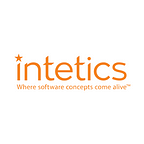How To Transition to a Different Development Team Model
Distributed development teams are on the rise — and it makes sense. After all, the decentralized team model offers a number of advantages, from access to global talent to faster turnaround times. But making the transition from one team model to another can be difficult. Is it worth making the switch?
That’s what we want to help you figure out. We’ll present you with the pros and cons of in-house and distributed models, as well as present you with a growing alternative: Remote In-Sourcing®. We’ll also give you tips on making the transition as smooth as possible.
Types of Development Team Models
First, it’s important to understand the nuances of each development team model. Now, we aren’t talking about what SDLC your team uses (Agile, Waterfall, etc.). Instead, we’re referring to where your team resides and how you source developers.
In-house was the traditional model for development teams for decades; it implies building an internal team from scratch and having them work at a central location. But in today’s ever-virtualizing world, local teams have naturally evolved into distributed teams.
Remote technologies have paved the way for global, cross-national collaboration — letting you source developers from countries with more affordable salaries, set up advantageous working hours, and benefit from the best minds in the world.
And there is one more viable model that we’d like to discuss: Remote In-Sourcing®. This combines the advantages of in-house and distributed teams. Essentially, the vendor will provide you with fully remote developers who act like an in-house team. It can be considered similar to offshoring in that you don’t have to worry about logistics and operations, but the team operates completely under your direction and is exclusively dedicated to your project. This model allows you to easily scale up and down the number of developers you need, totally eliminate the expensive and time-consuming recruiting process, and access talented specialists who integrate seamlessly with your own team.
Now that you’ve gotten an overview of development team models, let’s examine their pros and cons.
In-House
Pros:
- It is your team, so you are in control of every facet: from organizational culture and communication to the code of conduct.
- This model offers fast, synchronous communication.
Cons:
- Your talent pool is more limited than in other models, and it’s harder to scale your team.
- Because you are sourcing from your own region, you can’t leverage the affordable salaries of other countries.
- Costs are high for the team, equipment, and software.
Remote In-Sourcing®
Pros:
- Teams can be built quicker than the other models.
- You control the team without having to worry about recruitment costs.
- You can scale the team up and down.
- You can benefit from affordable salaries and a wide talent pool.
- You keep 100% of the intellectual property.
Cons:
- As with the distributed development model, there may be a difference in time zones, so extra care should be taken with communications.
Comparison
How To Switch Models
After reviewing the pros and cons of each model, perhaps you want to change the distribution of your own development team. It’s worth noting that you don’t have to switch to one method exclusively: for instance, you can use a Remote In-Sourcing® team to supplement your in-house team.
This allows you to keep a few developers on staff year-round while accessing affordable engineers when you need them — without needing to go through the trouble of recruiting.
Regardless of which model you want to switch to/from, there are some best practices to keep in mind:
- Maintain thorough, accurate documentation before the switch, as it makes it easier for new developers to acclimate to your project.
- Before transitioning to a new development team, make sure to review your contract’s termination clause to check who owns the codebase.
- If you’re parting ways with a development team, make sure to coordinate directly with third parties, including hosting providers and payment gateways.
- Set expectations for the transition, and factor in time for new team members to familiarize themselves with your project.
Meet Intetics — The Leading Provider of Remote In-Sourcing®
Remote In-Sourcing® is Intetics’s proprietary software development team model, and it’s been applied to numerous global projects. We’ve helped companies of all industries optimize their performance and accelerate time to market. Our development teams are scalable, follow the Agile SDLC, and have the talent needed to give your business a competitive boost.
If you’re ready to supplement or replace your in-house development team without the headaches of recruiting, reach out today!
Hi, I’m Into Tesler, your personal expert in Software Solutions for Your business at Intetics.
Need a Software? Full-cycle solutions for Your business: Custom Software Development To Build Your Product; Remote In-Sourcing® To Create Your Team; TETRA™: To Assess Your Software Product; All-Things-Digital To Modernize Your Business. We will help you every step of the way. Just contact me.
